 All behavioral studies performed while animals are in captivity are suspect. Even flies, and other insects, behave differently in experimental conditions rather than a natural habitat. But, some animals are extremely difficult to study in the wild, especially if they travel much faster than we do, such as birds, or can cleverly hide from us, true for many animals. Most animals will run when humans try to observe them, usually for good reason. Still, recent study shows great evidence of animal cultures.
All behavioral studies performed while animals are in captivity are suspect. Even flies, and other insects, behave differently in experimental conditions rather than a natural habitat. But, some animals are extremely difficult to study in the wild, especially if they travel much faster than we do, such as birds, or can cleverly hide from us, true for many animals. Most animals will run when humans try to observe them, usually for good reason. Still, recent study shows great evidence of animal cultures.
Rather than accepting the difficulty in understanding animal societies in the wild, the convenient assumption is that humans are superior to all other animals. But, is this so?
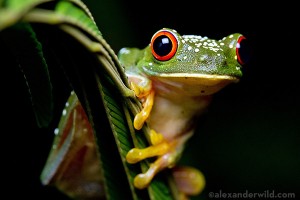 Recently, Mark Bekoff and I wrote an article in Psychology Today about the brains of birds, lizards and bees, demonstrating advanced capacities in very small brains without a cortex. These animals have completely different brain structures than humans– a brainstem which performs the functions of the hippocampus and frontal cortex using human like neurons.
Recently, Mark Bekoff and I wrote an article in Psychology Today about the brains of birds, lizards and bees, demonstrating advanced capacities in very small brains without a cortex. These animals have completely different brain structures than humans– a brainstem which performs the functions of the hippocampus and frontal cortex using human like neurons.
Many animal talents and behaviors are beyond the capacity of human beings. One example is bees’ ability to fly over miles of terrain and accurately remember landmarks.  Another is their ability to travel between multiple flowers efficiently, taking into account each flower’s relative value and the shortest distance between them (for humans this is an advanced mathematical question called the ‘Travelling Salesman Problem’). Bees have a symbolic language that can give accurate information relative to the angles of the sun, and individual bees learn from this information.
Another is their ability to travel between multiple flowers efficiently, taking into account each flower’s relative value and the shortest distance between them (for humans this is an advanced mathematical question called the ‘Travelling Salesman Problem’). Bees have a symbolic language that can give accurate information relative to the angles of the sun, and individual bees learn from this information.
In fact, we do not understand the advanced societies of most animals including termites, ants and bees, and attempt to negate their reality, assuming they function as computer algorithms. In fact, humans cannot experience the world as an animal with very different sensory, motor and cognitive capacities.
Accumulating research during the past decade shows that social learning is very widespread among many animals, from large to small. Several very recent studies show very strong evidence of social learning and conformism in monkeys and whales.
Social Learning is Very Widespread
Scientists first recognized culture in animals about a decade ago when Nature published an article about chimpanzee cultural activities. Since then, study of many species shows that social learning is a key aspect of life. This includes birds, whales, and now even some insects.
Culture is not easily defined. Here, culture is defined as passing on learned activities such as languages, fashion, rituals, and games. When a specific animal group develops and passes on these activities to their young it is considered culture.
Primate Culture
 A recent example of cultural learning in monkeys occurred when a group of macaque monkeys started washing sweet potatoes in a stream before eating them. Prior to this innovation, monkeys dug up the potatoes and ate them. When one creative monkey carried soiled potatoes to a stream and washed them, this behavior spread throughout the colony.
A recent example of cultural learning in monkeys occurred when a group of macaque monkeys started washing sweet potatoes in a stream before eating them. Prior to this innovation, monkeys dug up the potatoes and ate them. When one creative monkey carried soiled potatoes to a stream and washed them, this behavior spread throughout the colony.
In a broad study, chimpanzees demonstrated 65 different types of behavior with 42 showing innovation and imitation, being varied in different groups. Some of the  differences in behaviors are related to fear of predators, such as hiding rather than building a nest. But, 39 behaviors were specific to a group of chimps and passed on to others. These innovative behaviors included the use of tools, techniques of building and specific types of grooming and courtship.
differences in behaviors are related to fear of predators, such as hiding rather than building a nest. But, 39 behaviors were specific to a group of chimps and passed on to others. These innovative behaviors included the use of tools, techniques of building and specific types of grooming and courtship.
These behaviors were not genetically determined nor arrived at by individuals through trial and error. Other examples included unusual rituals of sniffing hands and poking eyes. One example involved a chimp taking hold of the hand of another and lifting it into the air, allowing both to groom each other’s armpits. These examples d0 not have any benefits, but were followed and became customs.
The unique behaviors that were socially learned included use of sticks, leaves, branches, and stones for communication, play, food gathering, eating and relaxation. Each group used them differently and passed them on within the group.
In 2003 orangutans were added to this list with playful behavior such as making specific dolls from leaves and blowing raspberries at each other.
Grape Games
Another chimp experiment showed social learning. A grape was placed on a platform in a box with a block that would not allow it to fall out. Two different techniques were taught to two chimpanzees. One technique lifted the block out with a stick and the other pushed the block back, both allowing the grape to fall out.
When the two chimpanzees returned to their social communities most followed the technique shown to them by the trained chimp. Some figured out how to do it themselves, but if they arrived at the alternative technique they later switched to join with all the others using the same technique. Poking is more natural for monkeys, but if most were lifting they all eventually used the lifting.
Bird Culture
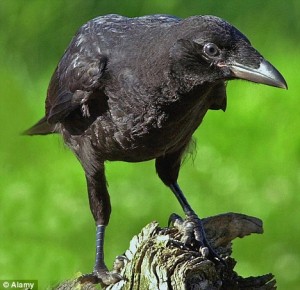 Birds, with no cortex, show advanced behavior including learning, imitating and cultural activities. Birds learn foraging behavior from others, and constantly innovate and adapt with social learning.
Birds, with no cortex, show advanced behavior including learning, imitating and cultural activities. Birds learn foraging behavior from others, and constantly innovate and adapt with social learning.
Pigeons and crows have adjusted to city life with many adaptations that are then copied by others. One group learned to stalk milk deliveries.
With the death of a member of a flock, an entire bird community stopped what they were doing and sat for 48 hours, not foraging. This grieving was 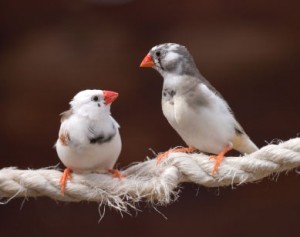 only noted in the wild. (see post “Death of a Bird”)
only noted in the wild. (see post “Death of a Bird”)
Song birds name each of their children with a specific song and each are then known by that name during their lifetime. Songbirds learn their songs from elders. Finches learn grammar, like humans by listening to others. Bengal finches use strict rules of syntax. That is, the order that they use different tweets is important, more complex than language used by monkeys.

In a study where young birds were raised in isolation and developed an abnormal song, another generation the children learned these as the “normal” songs.
Many birds use social learning for vocal dialects among songbirds, sparrows, starlings, and cowbirds.
Bowerbirds outdo each other with artistic entrances to their nests, which involve advanced use of perspective. When a bowerbird makes an innovation in the artwork others follow this and then improve upon it.
Most Animals Use Social Learning
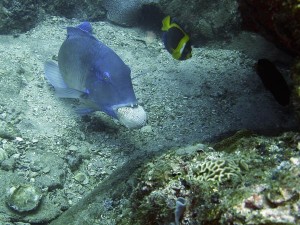
Soon after the first primate social learning was documented, whales and dolphins were observed with specific invented behaviors that were passed on — songs, specific migration routes and specific types of fishing. Fish also learn from others how and where to gather food, and specific responses to predators. Guppies follow the oldest and wisest in the social network. The tusk fish has discovered how to use tools for breaking open shells. A fish will carry the tool and then swing it’s head banging it on the shell. After this invention others followed and used the technique.
Crickets and bees now are noted to pass on traditions. Specifically, bees watch and learn from others about foraging patterns. Meerkats use social learning to find edible food, and to avoid predators. Some meerkats like to sleep in and get up later than would be beneficial for effective foraging. Rats used social learning for acquired behavior of stripping pine cone scales prior to eating them.
How Do Animals Learn
Animals don’t just copy. Some learn from symbolic language like the bees.
Teaching: Many insects teach their young. Ants guide others to food. Killer whales beach themselves to hunt for pinnipeds on the shore. They push their young to perform the same trick. Dolphins use sponges to obtain food and teach this to others. Birds learn songs from a mentor
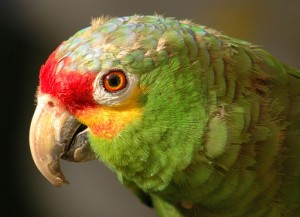 Imitation and Innovation: The grey parrot Alex imitated human language and created vocalizations. He could invent words by putting names together and make short sentences.
Imitation and Innovation: The grey parrot Alex imitated human language and created vocalizations. He could invent words by putting names together and make short sentences.
Conformists: Kinji Imanishi in 1950 noted that if animals can learn from each other they would create cultural diversity from inventions. Without understanding animals it has been impossible to know whether animals understand the motives of those that they imitate. But, current research has clearly shown that apes imitate with the full understanding of what the effect will be of the learned behavior.
Two recent studies in whales and monkeys now show that social learning and conforming behavior is very common in animal communities.
Cetacean Culture
Previous research showed whales, dolphins and porpoises pass on vocalization and feeding techniques. Vocalizations have been studied especially with bottlenose dolphin, humpback whale, and killer whale. It has been known that whales cluster based on vocal dialects, have very long lifetimes, and prolonged parental care.
 Dolphins in Australia teach their children how to use tools for fishing. Sponges are used as a glove as they look for prey with their nose. Interestingly, the dolphins find the rare sponges that are conical in shape so they will fit and not fall off. Most sponges are circular or flat and they have to search for these specially shaped useful versions. Study showed that this was not a genetic behavior.
Dolphins in Australia teach their children how to use tools for fishing. Sponges are used as a glove as they look for prey with their nose. Interestingly, the dolphins find the rare sponges that are conical in shape so they will fit and not fall off. Most sponges are circular or flat and they have to search for these specially shaped useful versions. Study showed that this was not a genetic behavior.
Humpback whales demonstrate culture on a vast world-wild scale. Those in a  group sing a similar song for mating, but the favorite song changes over time. An innovator whale will sing a new song that catches on, much like human’s “hit songs”. This catchy tune then spreads across the ocean from west to east. The song travels from one population to another. It is similar to fads that spread across the world in human society. This study spanned a decade and included six populations of whales in the Pacific Ocean. An example is a song that spread from the eastern coast of Australia to French Polynesia in two years. The song was learned whale by whale across the ocean. Of all the songs, only one spread in the other direction to the west from the east.
group sing a similar song for mating, but the favorite song changes over time. An innovator whale will sing a new song that catches on, much like human’s “hit songs”. This catchy tune then spreads across the ocean from west to east. The song travels from one population to another. It is similar to fads that spread across the world in human society. This study spanned a decade and included six populations of whales in the Pacific Ocean. An example is a song that spread from the eastern coast of Australia to French Polynesia in two years. The song was learned whale by whale across the ocean. Of all the songs, only one spread in the other direction to the west from the east.
Most of the most popular songs have variations of previous hits with some new added element. This is, again, very similar to the spread of popular human music. When the new song appears, most adopt it rapidly and the new song is a hit in one breeding season.
Pilot whales also show interesting behavior when predators are near. Two different groups were observed, one very isolated without predators, and another near human boats who endanger the community. Teaching of children was observed. In particular, when in danger the community follow leaders and perform synchronized swimming. When near a boat they form a very alert group and swim in perfect synchrony until it is safe. These whales stay in their community for their entire life with permanent relationships and with no interchange between groups.
The New Whale Lobtail Technique
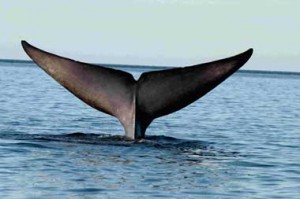 The most recent research shows that hunting techniques of humpback whales are socially learned behaviors. The study of whales involved almost 74,000 whale observations over 27 years. Each whale was personally identified when they came to a particular spot in Maine. The observations included 653 whales each observed more than 20 times.
The most recent research shows that hunting techniques of humpback whales are socially learned behaviors. The study of whales involved almost 74,000 whale observations over 27 years. Each whale was personally identified when they came to a particular spot in Maine. The observations included 653 whales each observed more than 20 times.
 At this site the whales used an unusual form of food gathering called “bubble feeding,” This technique, which was invented by whales, drives fish into a central location, by whales surrounding them underwater and making bubbles. This coordinated activity of up to a dozen whales making bubbles under the water confuses the fish who then swim together into the center. At the surface a circle of bubbles can be seen surrounding and closing in on the fish. Then suddenly, together, all the whales lurch themselves upward with their mouths open catching a large amount of the fish.
At this site the whales used an unusual form of food gathering called “bubble feeding,” This technique, which was invented by whales, drives fish into a central location, by whales surrounding them underwater and making bubbles. This coordinated activity of up to a dozen whales making bubbles under the water confuses the fish who then swim together into the center. At the surface a circle of bubbles can be seen surrounding and closing in on the fish. Then suddenly, together, all the whales lurch themselves upward with their mouths open catching a large amount of the fish.
In 1980 the researchers noticed an innovation. During the bubble technique, one whale whacked the water with its tail making a loud sound, frightening the fish to swim further into the center of the bubble circle. This was termed the “lobtail technique”. Study showed that the more younger whales were exposed to the technique, the more they used it.
Monkey’s Conformity
Another very recent study showed that vervet monkeys demonstrate social learning. In this elaborate controlled experiment, social learning was demonstrated using different colored corn given to the monkeys by the scientists.
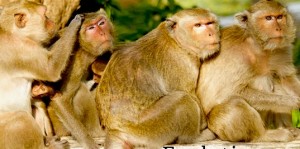 Four groups of monkeys each were given two plastic trays with corn dyed blue and pink, two colors the monkeys were familiar with. One of the corn baskets was soaked in aloe leaves making them bitter and distasteful. In two groups the blue was made bitter and the other two the pink was bitter. Monkeys learned to eat only the corn with a pleasant taste.
Four groups of monkeys each were given two plastic trays with corn dyed blue and pink, two colors the monkeys were familiar with. One of the corn baskets was soaked in aloe leaves making them bitter and distasteful. In two groups the blue was made bitter and the other two the pink was bitter. Monkeys learned to eat only the corn with a pleasant taste.
Four months later, many new children were old enough to eat the corn, and the group was again presented with the pink and blue containers of corn, but this time both of the colors had good taste. Over the next months all of the monkeys maintained their first color preference, never tasting the other. Even members of other groups that had previously eaten the alternative color, when they joined a new community always ate the color chosen by that new community.
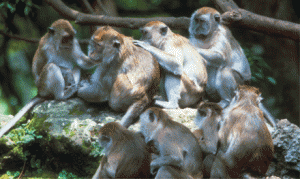 All (but one child) of the resident monkeys ate only the color they were used to, and the visitors and children followed by eating only that color, leaving the other perfectly good corn to waste. The one child who ate the opposite corn was very low ranking and therefore did not have easy access to any food. He tasted the forbidden colored corn out of desperation.
All (but one child) of the resident monkeys ate only the color they were used to, and the visitors and children followed by eating only that color, leaving the other perfectly good corn to waste. The one child who ate the opposite corn was very low ranking and therefore did not have easy access to any food. He tasted the forbidden colored corn out of desperation.
The monkeys did not experiment but rather conformed to the learned behavior. The only visitor that did not conform was a visiting male (with an opposite color training) who rapidly became the leader of his new group, and therefore didn’t have time to follow.
Animal Cultures
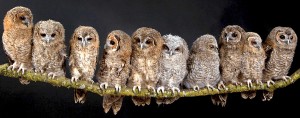 There is no doubt that animals have social learning, and culture, when allowed to remain in their natural habitat. The destruction of many habitats is making research into this culture more and more difficult.
There is no doubt that animals have social learning, and culture, when allowed to remain in their natural habitat. The destruction of many habitats is making research into this culture more and more difficult.
Animals have many abilities beyond that of human beings, while humans excel in specific types of cognition. Much can be learned from animal cultures and hopefully humans will not continue to destroy them.